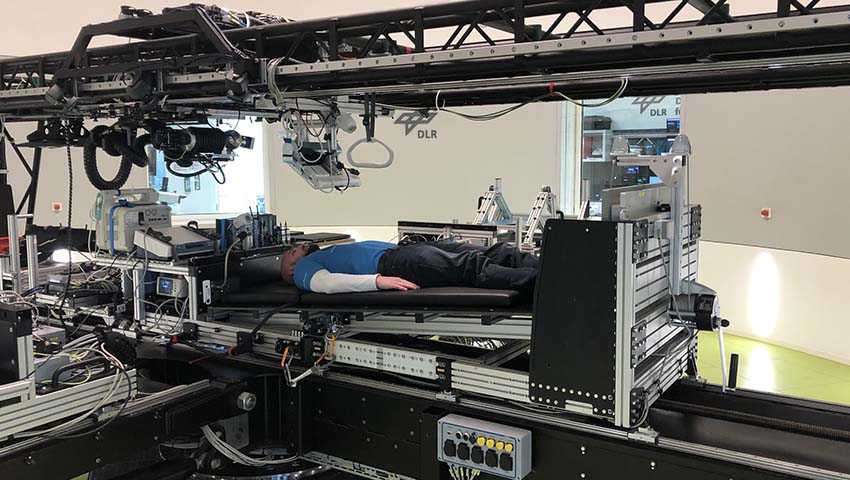
Carried out at the German Aerospace Center’s (DLR) ':envihab' facility, the long-term bedrest study is the first of its kind to be conducted in partnership between the two agencies. It is also the first to employ DLR’s short-arm centrifuge as a way of recreating gravity for participants.
Bedrest has long been used to mimic some of the changes our bodies experience in the weightlessness of space. Humans are made to live on Earth and without the constant pull of gravity it is common for muscles and bones to start wasting away.
Currently, astronauts on board the International Space Station exercise for up to 2.5 hours per day and maintain a balanced diet to help mitigate microgravity’s effects, but scientists believe adding a dose of artificial gravity could be key during longer-term missions.
ESA team leader for research Jennifer Ngo-Anh said the international nature of the long-term bedrest study reflects the international collaboration necessary as ESA plans future missions to the moon and beyond.
"To make these missions possible, various risks to astronaut health must be minimised. This study allows us to address the issue of muscular atrophy caused by weightlessness, but also other stressors such as cosmic radiation, isolation and spatial restrictions," she said.
Throughout the course of the study, all 24 participants will need to remain at :envihab on the DLR campus. There they will be kept in beds with the head end tilted six degrees below horizontal and must ensure one of their shoulders is touching the mattress at all times.
A number of different experiments will be carried out over the course of the study, looking at cardiovascular function, balance and muscle strength, metabolism and cognitive performance among other factors. Seven of these experiments will be conducted by European-led research groups, with a view to validating the findings on the ISS during future missions.
Receive the latest developments and updates on Australia’s space industry direct to your inbox. Subscribe today to Space Connect here.












